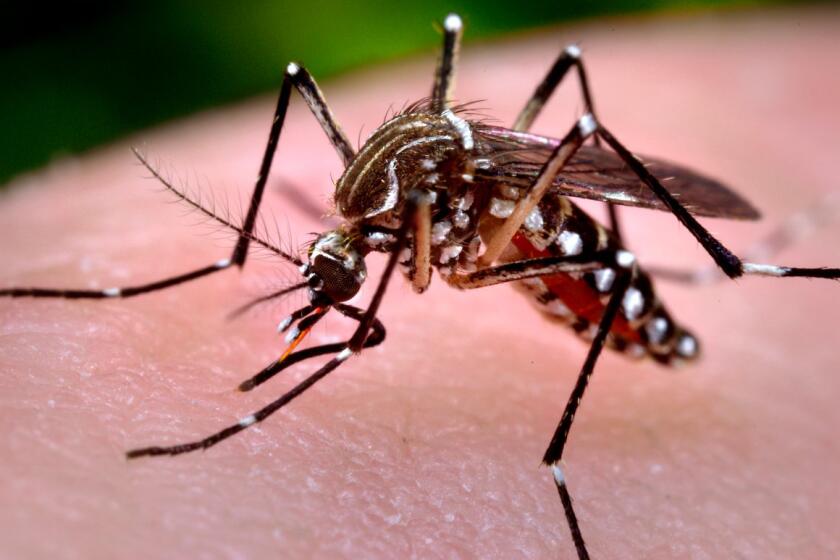MEDICINE AIDS TREATMENT : Ultraviolet Light Therapy Showing Promise in Tests
A form of ultraviolet light therapy that has been successful in treating patients with a rare skin cancer is showing early promise as an experimental AIDS therapy.
Four of five patients with AIDS-related complex treated in a preliminary trial had decreased symptoms and improved immune system function, according to an article in today’s Annals of Internal Medicine.
In laboratory experiments, the treatments have been shown to kill the AIDS virus directly and to stimulate the immune system.
“We have some encouraging results. . . . The data definitely needs to be corroborated,” said Dr. Emil Bisaccia, a dermatologist at Morristown Memorial Hospital in northern New Jersey and the principal author of the study.
Bisaccia said that 15 additional patients are now receiving the expensive monthly treatments. There have been no serious short-term side effects.
“The first patient treated, a homosexual man who before treatment was able to walk up a flight of stairs only with difficulty, is now capable of jogging 3.5 miles a day and lifting weights,” the report said. Two other participants “are now attending college and working full time.”
The findings are difficult to interpret because so few patients were treated and because there was no control group of untreated patients, a standard research procedure in tests of the effectiveness of new therapies. The researchers may also have been biased in their interpretation of the patients’ responses to therapy, according to an editorial by Dr. Elias Abrutyn, an associate editor of the medical journal.
Abrutyn wrote that the article was published, despite such “substantial questions,” to stimulate additional independent investigations and because “AIDS is a calamitous illness for which we need additional therapies.”
The treatments, known as “extracorporeal photopheresis,” are approved by the U.S. Food and Drug Administration to treat a skin cancer of T-4 lymphocytes, the same white blood cells that are attacked by the AIDS virus. The tumor is called “cutaneous T-cell lymphoma.”
During the treatments, which are administered on two consecutive days once a month, the patient ingests 8-methoxypsoralen, a light-activated anti-cancer drug. Then, small amounts of the patient’s blood are removed from the body, and the white blood cells and plasma, the liquid portion of the blood, are separated. The red blood cells are returned to the body.
After more than a pint of white blood cells and plasma is collected, the mixture is passed as a thin film through a sterile irradiation chamber, where it is exposed to high-dose ultraviolet light. The process takes three hours. Then the mixture is transfused back into the patient.
It is not certain how the treatments work against cancer or might work against the AIDS virus. When activated by light, the drug can bind to the DNA in chromosomes, damaging the cells and interfering with their ability to reproduce.
A leading theory is that abnormal T-cells are selectively targeted by photopheresis and then recognized and destroyed by the immune system when they are returned to the body.
The treatments may be killing AIDS virus particles as well as “jump-starting the immune system,” said Dr. Albert S. Klainer, another author of the study. Four of the first five AIDS-related complex patients to receive the therapy have continued with monthly therapies for as long as 19 months, Bisaccia said. One patient, who was judged to have improved, dropped out of the study after five months.



